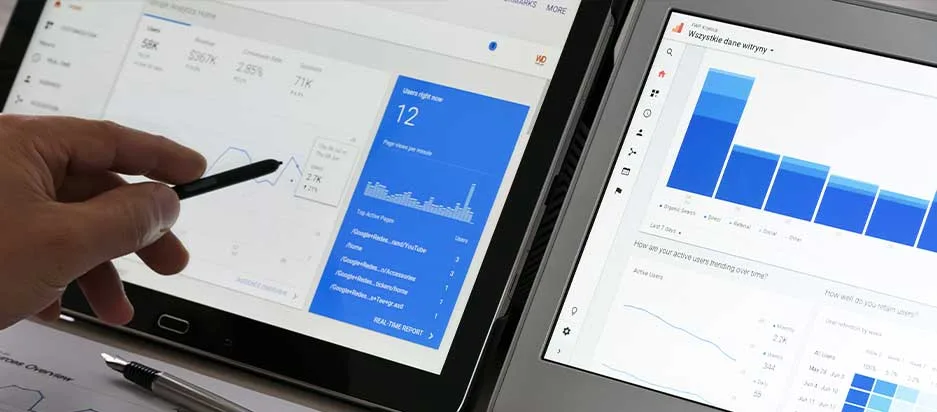In the year 2005, Google company launched google analytics. As one of the components of the Google Marketing Platform, google analytics is a service that monitors and takes data on the activities on a website; such activities may include but are not limited to how often a specific website is visited. Since its launch, experts have been working round the clock to improve it. Various versions of this service are undergoing development. What is a version? A version is an improvement of the previous. The versions of google analytics that are emerging are more advanced than the previous ones. Currently, the latest version is GA4, which succeeded Universal Analytics.
Google announced that by July 2023, every user should have upgraded from Universal Analytics to Google analytics 4. Users should take this advice seriously because Universal Analytics will no longer process data by the deadline. So, what is the comparison between Google Analytics and Universal Analytics?
Google Analytics 4. What is it?
GA 4 came into the public domain in October of the year 2020. Google termed it the default version of the software for information gathering and interpretation of web traffic. The launch of GA4 came with a mixed reaction amongst the users; some claimed that it has an unfriendly user interface, making it tiresome to use. Such feedback is essential because they aid in improving the products.
What is Google Analytics 4? People globally, especially business owners and website owners, use Google Analytics 4 to monitor their sites and know the traffic they generate. Therefore, this tool is essential when it comes to online marketing. GA4 gathers information about the frequency at which internet users access various websites, and mobile applications, e.t.c. The more users visit a specific site, the more that brand becomes popular.
GA 4 has an improved and unique feature in comparison to UA. These features enable it to be more efficient than its predecessor. For example, the data modeling which works on Al in filling data gaps has enabled it to work smoothly without being blocked by firewall and cookies consent popups. Such a feature never existed in UA, and it is constantly blocked by the firewall and other privacy and security protection of data on the internet.

App + Web was built and officially released in 2019 to help businesses market themselves by monitoring how clients use software, websites, and applications to interact with their brands. It is a similar platform the Google Analytics 4 operates. Consumers are critical in the business; therefore, coming up with the GA4 was to gather data that helps enterprises know how consumers interact with their products.
The machine learning feature enables GA4 to help enterprises understand those clients who disable cookies since it can gather information even if a user decides to block cookies. Some web browsers, such as Mozilla Firefox, do not allow analytics to gather information when browsers are browsing by automatically blocking the analytics. Most websites for privacy ask their users whether to allow analytics to track the data they are browsing or not.
Traditional analytics such as the UA is increasingly becoming unreliable due to user protection laws like the CCPA and the option that enables users to either accept or decline cookies as they access various sites. UA has not been able to give accurate information as required by enterprises. Google Analytics 4 has incorporated the user data protection laws and can bypass if a user blocks cookies. GA4 gives accurate and meaningful information that has propelled the business to the next level.
Features of Google Analytics 4
Businesses were somehow skeptical about using the new Google Analytics 4, and some complained about how unfriendly it is. After one year of usage, they recognized its prowess and new features that the previous version never had.
1. Ability to make predictions
The new Google Analytics 4 has got two unique features: Artificial Intelligence and Machine learning which enables businesses to tell the market trend. GA4 can be used to track, compare, and access business revenues and the frequency in which clients stop doing business with an enterprise over some time. This information helps businesses predict future customer behavior and make necessary decisions to improve sales and raise the revenue of their enterprises.
2. Ability to create custom reports

Universal Analytics had more appealing custom dashboards but could not perform essential functions such as creating custom reports. The analysis hub, which comes as Explorations in GA4, enables businesses to create custom reports. Its interface resembles that of a Microsoft Excel worksheet; therefore, if you are familiar with excel, then using explorations will not give you a headache.
Explorations enable one to come up with tables used for data presentation. The data, later on, is shared as a report to customers or other interested parties in soft or hard copies.
3. Creation and Tracking of events
In 2019, the idea of begging developers to create and track events came to an end. The GA4 comes with a feature that automatically tracks important events. It also enables one to create an event they want to track by modifying an existing event in the platform. To add one, GA4 enables users to create and track a maximum of 300 events.
4. Creation and tracking conversation feature
It is easier to track a conversation in GA4 than to track an event because it is easier to change a tracked event into a conversation by switching between the two. The predecessor enabled users to track only 20 conversations, but the GA4 can track up to 30 conversations. UA does not automatically delete conversations, but the GA4 allows users to do away with the conversation they no longer need.
5. Automated table customization feature
Google Analytics 4 gives the admin ability to modify the information in the reports. Apart from modification, the admins can also customize the reports to appeal to the eyes.
Users do not have to see many tables as those in Universal Analytics. As much as these tables were resourceful, they were hard to modify. GA4 version improved on this.
6. Feature for detecting an anomaly

If google had predicted an incident and it did not happen, that becomes an anomaly. For example, if the business should be making a daily profit of $5000, but it does not realize this, GA4 detects it as an anomaly. The infusion of artificial intelligence and machine learning-enabled google to develop this fantastic feature.
The feature has saved businesses from the tedious statistical work to prove whether an event was essential or not.
7. Use Segments Once Feature
Whenever one wants a specific audience to get specific information, they can create a segment. GA4 creates segments but does not save them. In every reporting, there are comparison tools that help in segment creation. One can also make permanent segments; this is possible by clicking build an audience.
Universal Analytics enabled users to create segments that automatically saved; a user had to physically delete these segments in case they never needed them after use.
Differences between the Google Analytics 4 and the Universal Analytics
Universal Analytics came into the markets and received positive reviews from users. People felt it revolutionized the website data collection. The developers felt that Universal Analytics could not effectively perform some tasks and decided to develop a better version named as Google Analytics 4. What does the GA4 have that UA does not have?
1. A completely new User Interface
The UI of GA4 and that of UA are entirely different. Google Analytics 4 has a more advanced user interface that has caused mixed reactions amongst users with divergent opinions. Some claim that the user interface is not friendly, and they spend a lot of time looking for what they want. The UI is advanced to make it more appealing and perform more tasks.
2. Automatic Event Tracking
The GA4 has been modified to auto-track events and allow users to add events. This is called an event-based model; it has saved users from the traditional typical pageview, which was time-consuming and tidious. This feature never existed in UA.
3. The artificial intelligence
GA has a technology that can study and foretell the psychology of your clients. This feature is a typical tech language referred to as artificial intelligence. It studies the psychology of clients by analyzing the data it collects anonymously and the data shared by the clients; reports from such studies help the businesses to know the areas they need to improve on and those that they need to maintain. The anonymous data collection is due to GA 4’s ability to track clients’ logs without being blocked if a user uses Mozilla or fails to accept cookies as they browse.
In conclusion, Google Analytics 4 is a better version of google analytics that users need not be skeptical about using. It is just an improvement of Universal Analytics with a few changes that users need not worry about. These changes are to make it work better and more efficiently than UA.
Universal Analytics had a few shortcomings; to address them, google developers developed the GA 4 to improve the previous analytics tool. The new features added to the GA 4 made it different from the previous version in terms of appearance, User Interface, and efficiency.






